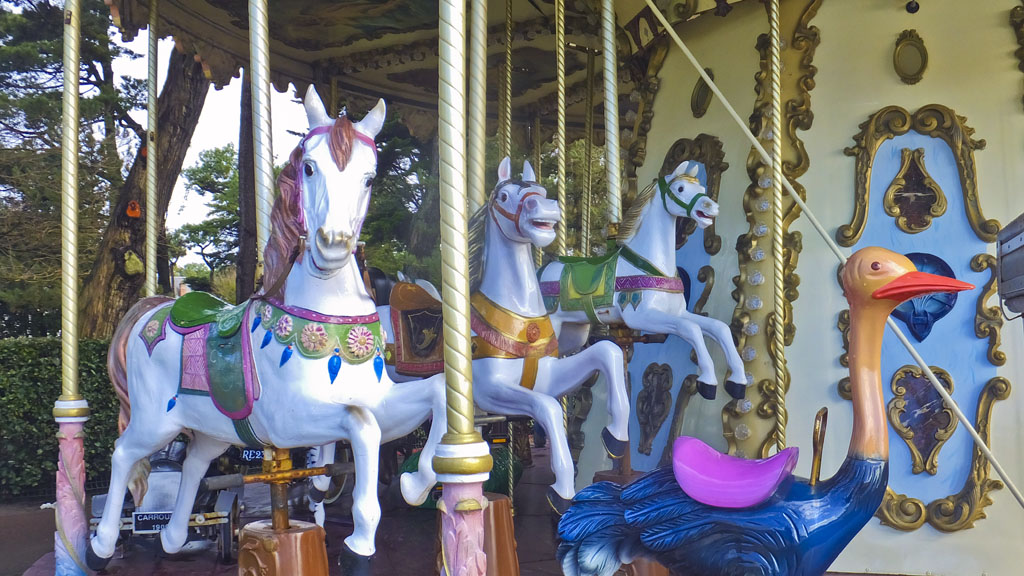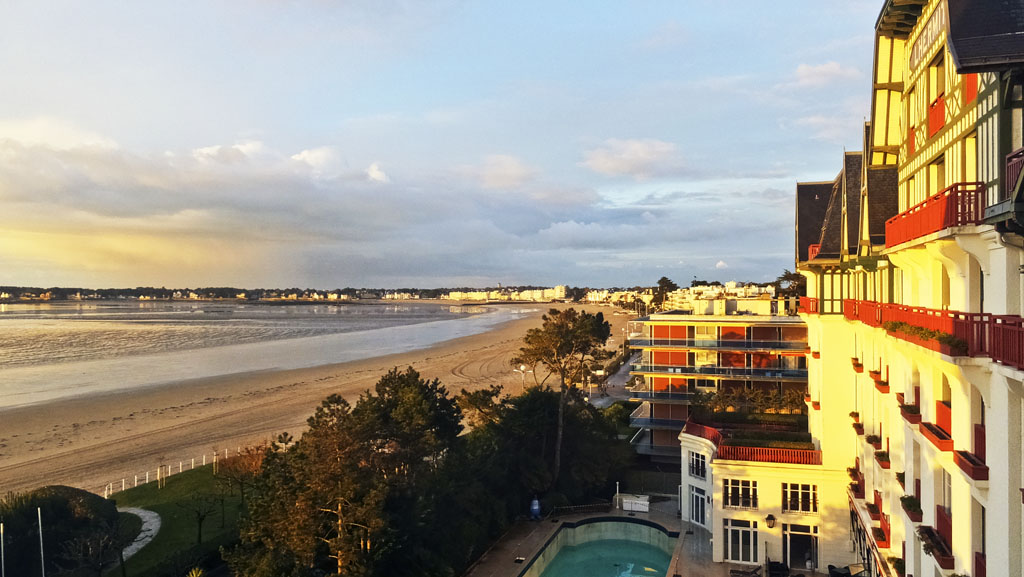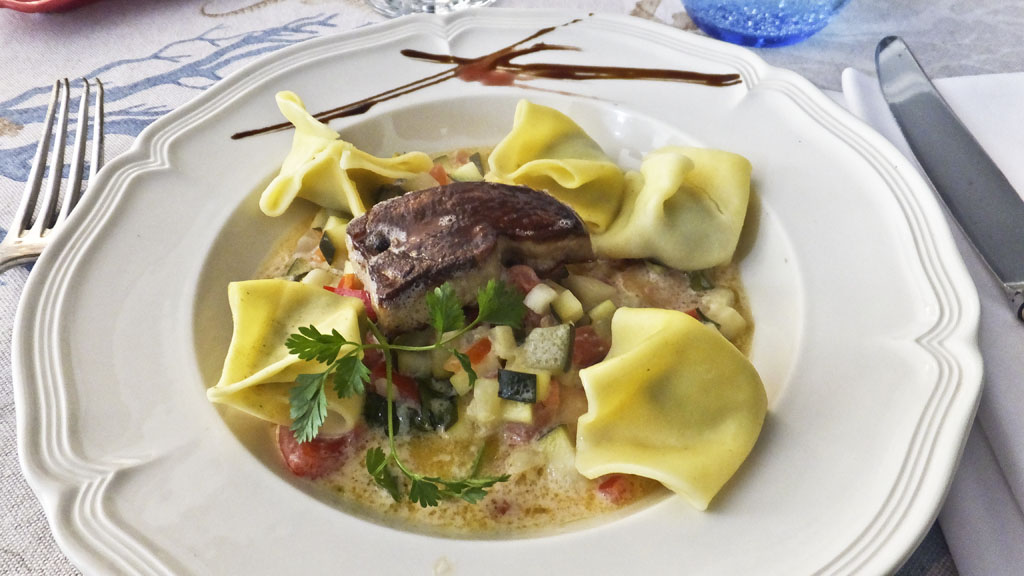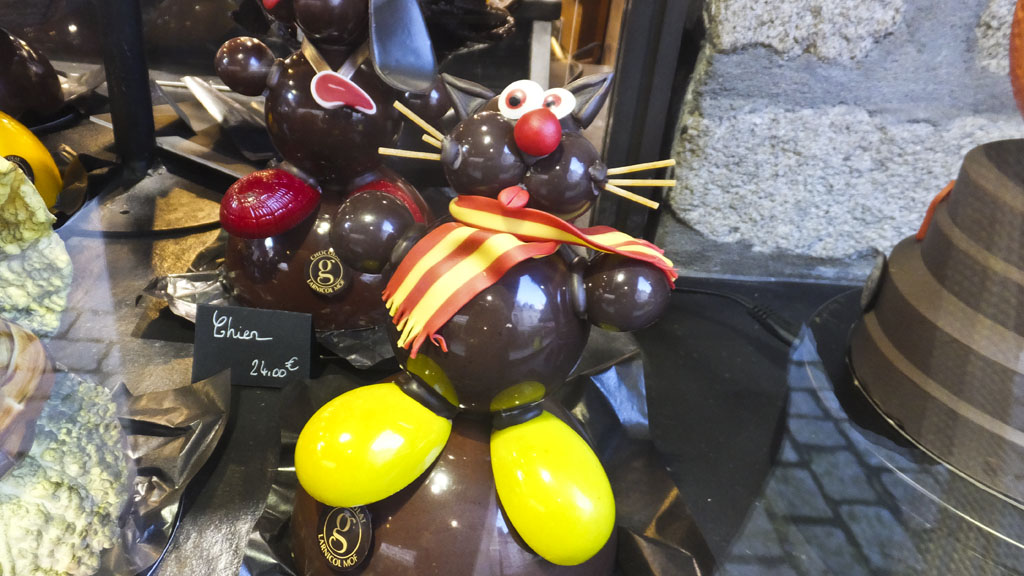
In February, the French town of La Baule with its castle-like hotels and grandly ornate stone homes looks like a fairy tale ghost town.
In a sense it is.
When the season is over as the leaves fall, the owners shutter their multi-million dollar “summer cottages” and head home to Paris or Marseilles, leaving behind a beautiful beach, 5-star hotels and unique cuisine.
But in reality, winter never really comes to Brittany–one of the longest-settled parts of France. Warm ocean currents along the peninsula on France’s west coast mean the temperature seldom dips below freezing and, coming in from the airport at Nantes in mid-February, the road is lined with wildflowers, leaves are emerging on the trees and pastures are brilliant green.
Arriving in Saint-Nazaire, at the mouth of the Loire River, the sun is brilliant and the temperature is so warm that a wool sweater seems too toasty. We’re here for a tour of the STX France shipyard where Royal Caribbean’s Harmony of the Seas,–the biggest cruise ship ever built–is getting its final fitting
There’s plenty of opportunity to explore the area and it made me realize the off season is a much more leisurely time to tour this historic region and sample its fare than in the summer, when hundreds upon thousands of tourists descend on the area at once and cram the beaches and bistros.
Here are five not-to-be missed experiences you can do like a local:

1) Dinner at Hotel Royal La Baule
The seaside resort of La Baule (literally the bowl) developed from a building boom at the end of the nineteenth century when a railroad to the coast make it possible to easily escape Paris for a summer beach vacation. The original 1896 hotel on the beach is a gorgeous Belle Epoque palace set in a manicured formal garden facing the sea. The garden’s whimsical carousel with beautifully maintained carved wood animals is a delight.
The hotel is part of the Lucien Barrière Group, the same company that runs Fouquet’s Hotel in Paris and upscale hotels in fashionable retreats like Cannes, Deauville and Marrakesh. So it’s little wonder that the restaurant in the Royal La Baule is a brasserie with similar décor to the Fouquet’s on the Champs-Elysees. The walls are decorated with framed portraits of French celebs who have dined here over the years.
Seafood is, of course, the specialty and the local winter treat is fresh oysters. The catch of the day today is dorade, the French name for sea bream, on a bed of scalloped potatoes with a side of roast fennel, the traditional seasonal winter vegetable in the region. The classic Fouquet’s dessert is handmade millefeuille and it’s served with caramel ice cream. Does it get any better?
The entrance to the dining room is dominated by a vast wine cabinet so tall that it has its own ladder that slides on a library track. The wine selections feature the local Loire regions, Anjou, Muscadet and Vouvray, and they include a broad range that are hard to find outside France. They’re all in peak condition, because they don’t have to travel far.

2) Breakfast Crêpes at L’Hermitage
La Baule is a round bay on the ocean that’s so shallow that at low tide the water can disappear and it becomes the domain of clam diggers. Hôtel L’Hermitage is modelled after a half-timbered Alpine hotel and the rooms are vast suites with a separate bath down a hall from the main bedroom.
Breakfast is a huge spread for guests and an opportunity to sample the local specialties: the thin pancakes we call Crêpes Breton or the savory buckwheat pancakes known here as galletes. They’re made with the standard recipe of flour, eggs, milk and the secret ingredient – lots of melted butter – and they’re often flavored with cinnamon, rum or vanilla. A regional affectation in recent years is lathering them with sugar and the ever-popular Nutella.

3) Lunch at Hotel Sud Bretagne
A local treasure is Hotel Sud Bretagne, near the south end of La Baule’s beach, in a village with the somewhat risqué sounding name Pornichet. It’s a four-star hotel whose restaurant specializes in local cuisine and features year-round dining on a terrace around a gorgeous private garden of ancient trees and a reflecting pond.
The appetizer of the day was fresh fois gras and pasta on a bed of chopped vegetables and a mushroom sauce. A just- delivered cache of fresh-from-the-ocean sea bass was served on sautéed potatoes and, yes, that seasonal fennel again. To top off lunch, there’s an irresistible dessert of cherry confit and fresh raspberries layered between two macaroons.
I’ve got to stop eating like this. But there was more temptation to come:
4) The Sinfully Rich Local Pastries
The town of Guérande, once a regional capital whose salt ponds made it so wealthy that it needed to keep building ever-higher stone walls around itself for defense, ended up an incredibly well preserved medieval town with few jobs in the twentieth century. What better way to create a lucrative tourist industry than to specialize in making traditional rich chocolates and irresistible butter-filled pastries in quaint shops built of stone?
You won’t get lost here, because the town isn’t that large, but you’ll want to prowl and sample the many confiseries and local bakeries that use ancient wood-fired ovens before buying too much, because a visit could end up being a high-carb day.
A specialty is a rich pastry with the odd name Kouign-amann. The center of the art of making these is the Kouign-Bihen Bakery just inside the main St. Michael’s gate, which serves these treasures warm from the oven in a dozen different flavors. The bakery has also got an outlet in La Baule.
The secret to these deliciously rich pastries is that they start with a solid sheet of chilled fresh and sugar-infused butter at their center. The dough is repeatedly folded, rolled and re-chilled until the multiple thin layers are rich with butterfat. No calorie counts are ever posted, but you’ve really got to try one. And you can always excuse getting a few more to take out because they make unique souvenirs of your visit to Guérande.

5) Eating Animals (Chocolate Ones) in Guérande
Another specialty of the ancient walled city is chocolate confections in the shape of cartoonish animals. They do a bustling business in bunnies at Easter time, and the rest of the year, their confectionary dogs, cats and even elephants make for great conversation pieces until you — accidentally or on purpose — knock an ear off and have a taste of the rich chocolate. I’d stick to an assortment of the bonbons and caramels, because you might not be able to resist the urge to eat a whole hog on your way home.
Thanks to the folks at Royal Caribbean for inviting me to the Harmony of the Seas reveal at the shipyard in Brittany and giving me the opportunity savor one of France’s most fascinating culinary regions.





